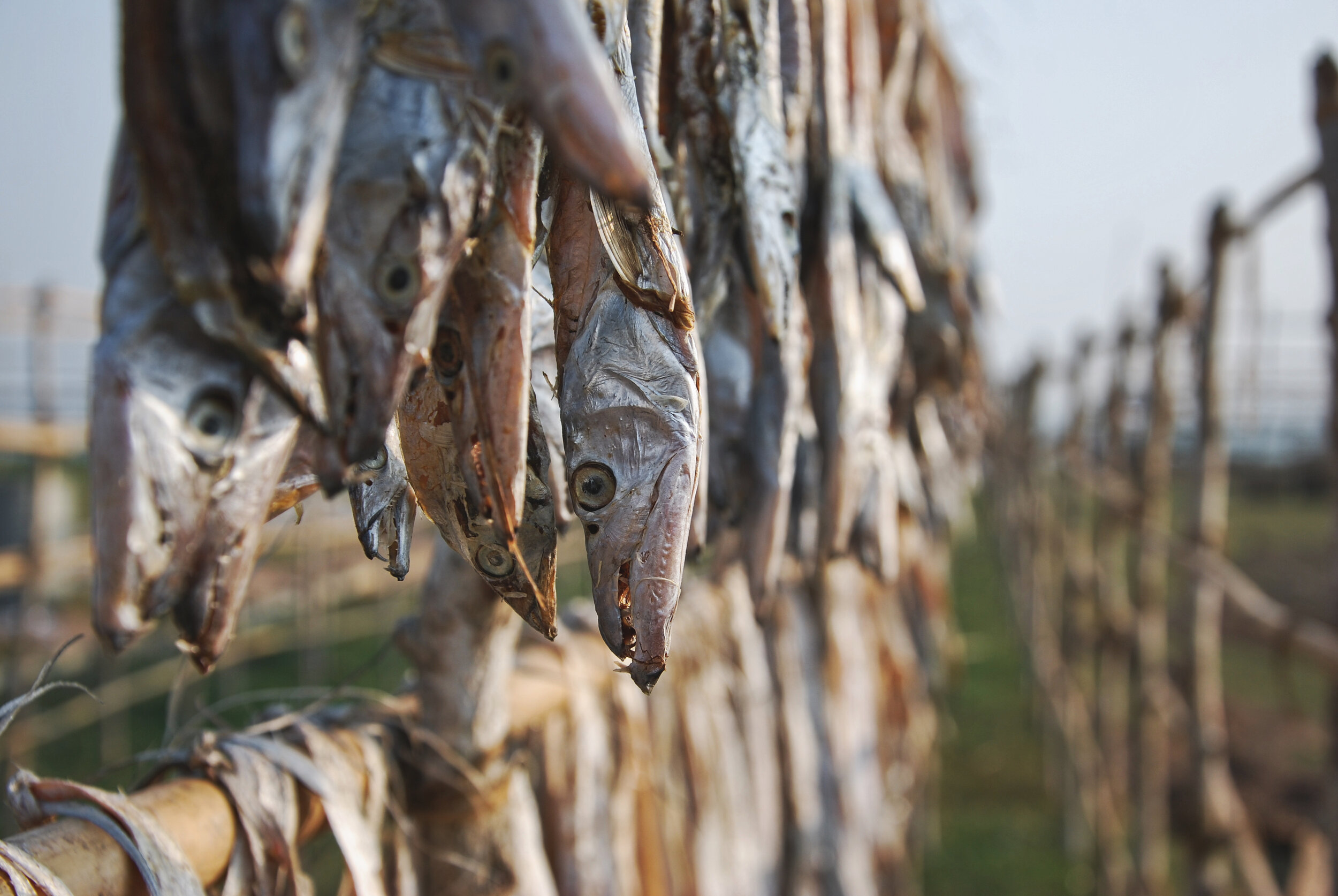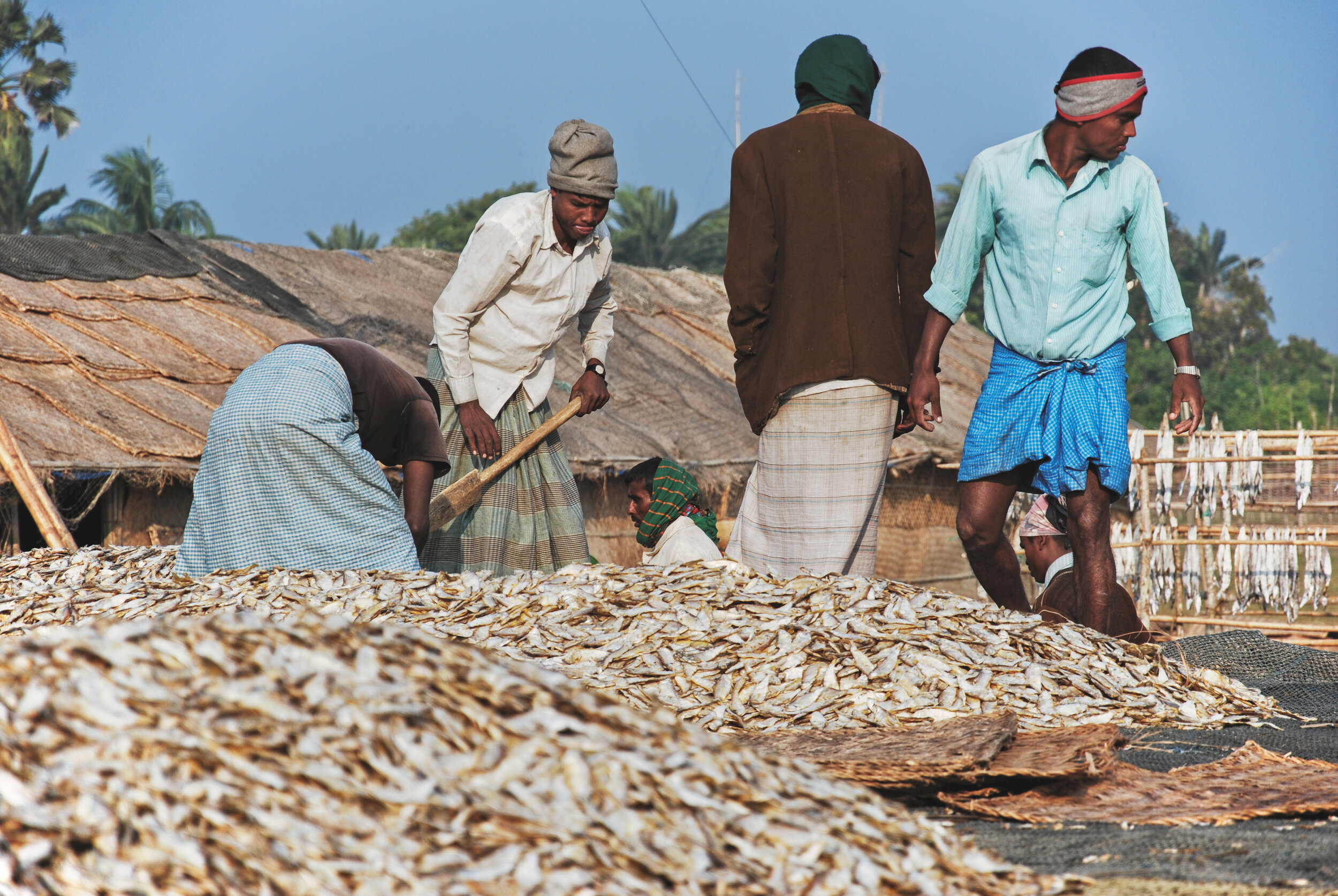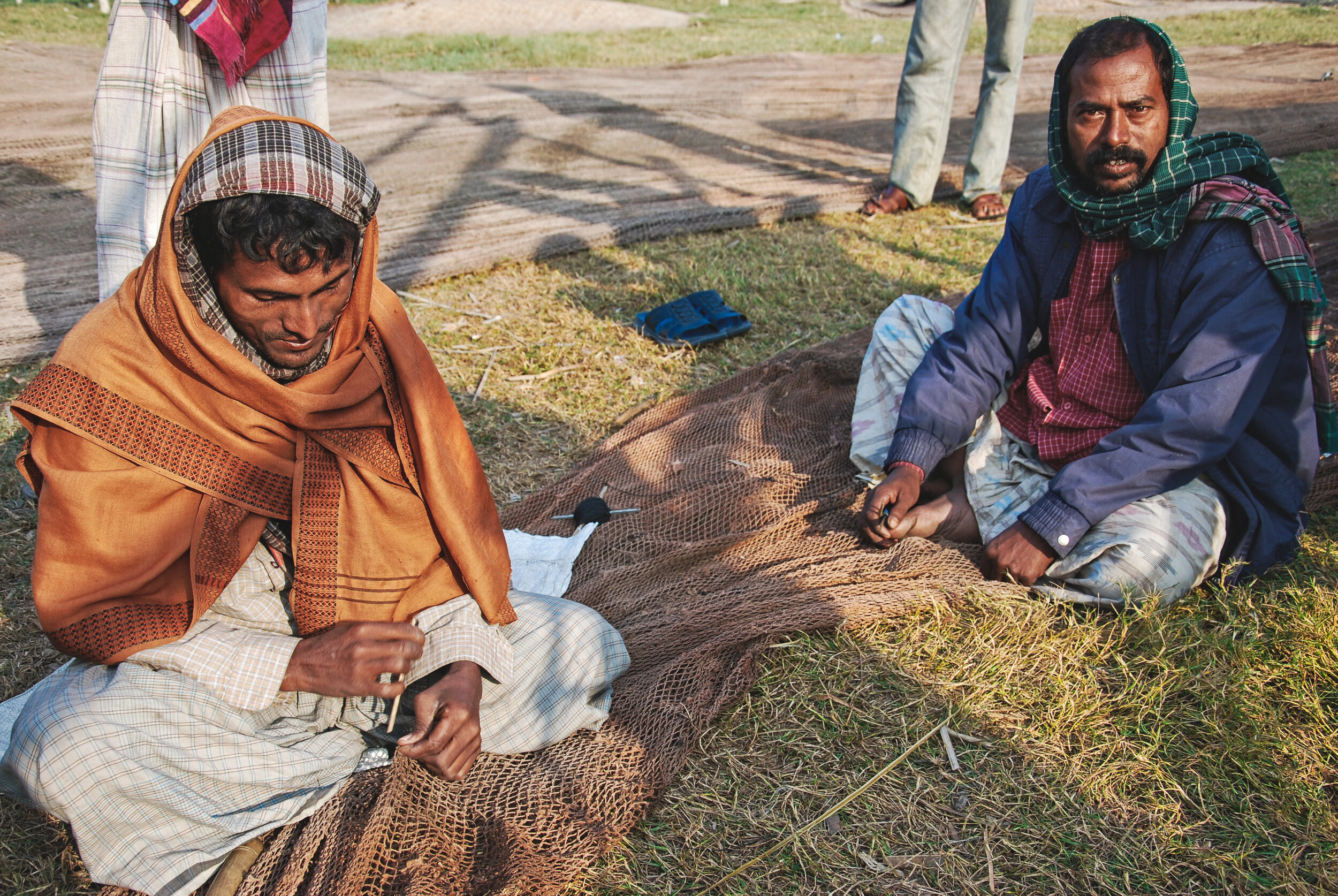104 - Dublar Char, Raju, & The Tower (Sundarbans, Bangladesh)
WE SPENT OUR FIRST NIGHT near a fishing village on Dublar Char (island) at the mouth of the Kunga River. The next morning, we went ashore to speak with local fishermen. The settlement is seasonal, occupied from November to mid-February. Thousands of temporary migrants head south every year to fish and harvest schooling shrimp. The lifestyle is hard and getting harder—dwindling catches, smaller fish. Overfishing is one culprit, violation of Bangladesh’s territorial waters by modern Indian fishing trawlers another. The latter multiplies the effects of the former. Antiquated wooden boats are no match for their Indian competitors. The government is unwilling or unable to intervene.
It’s no wonder disheartened young men resort to piracy. The desperation onsite was almost palpable… or was it my preconceived notions and cultural ignorance? No, it’s safe to say the situation was dire, a feeling confirmed after multiple interviews. Though folks were eager to tell “fishing” stories, few would speak about pirates. We were directed to a foreman with alleged first-hand knowledge, but he refused to elaborate, citing fear of retribution. Too many prying eyes and ears—anyone could be an informant. This wasn’t paranoia. Informants are sources of valuable intelligence to the brigands. Piracy’s economic tentacles spread far and deep.
We thanked him for his time and moved on, resigned to the reality no one would cooperate. Then Mr. Forid walked into our lives. He, a seasoned veteran with twenty-nine years of Dublar under his belt and forty-five men under his supervision, was unafraid if not motivated to share.
Of the three dominant groups (Rustom, Raju, and Zulfikar), Raju group (named for its leader) dominated. Standard operating procedure was to steal a boat or kidnap a few occupants, or both. The employer must pay a ransom or suffer the consequences. Violence isn’t unheard of, but we were told killings are rare. Most of the time victims pay all or part of the ransom, negating the need for escalation. Pirates lay in wait within the endless mangrove channels, often under the guise of anglers or woodcutters. According to Mr. Forid, attacks are frequent, citing four the previous week north of Dublar.
The Bangladesh Forest Department has neither the will nor the ability to thwart operations. As they are understaffed, underpaid, and ill-equipped, they find themselves at the mercy of Raju and his band of misfits. The group is too big to nail, and if Mr. Forid was correct, members sought refuge at ranger stations throughout the park. If you can’t beat ‘em or join ‘em, accept the “supplemental” salary.
He spoke of a tacit agreement between pirates and government. Keep it reasonable, don’t get greedy, and avoid extreme behavior. Follow the rules, and you’ll be allowed to conduct operations with relative impunity. Robbing tourists would force the government’s hand. (Or should I say, robbing foreign tourists would force the government’s hand.) Clamping down isn’t out of the question, as one group discovered in 1985. They took it too far. Government troops wiped them out. There’s a boundary, but it’s subject to interpretation, boiling down to who’s getting robbed, who’s not being bribed, and who’s got the juice to complain. (All this was rumor and hearsay and well beyond our abilities to verify. Still, the general outline repeated itself from person to person and later online.) Mr. Forid offered tea, then sat for a photo. We thanked him profusely before heading for a stroll east along the beach.
Where the mangrove meets the sea, you’ll find a halophytic root system with respiratory roots protruding from the sand and above the water as a defense against high salinity. The vast expanse of protrusions between individual trees conjured an elaborate booby-trap matrix for those foolish enough to wade through at high tide or skulk around at night. Humans aren’t the only beachgoers. Mr. Khan left tracks everywhere, underscoring yet another potential hazard faced by fishermen and woodcutters. Alex and I salivated at the thought of watching one of these striped denizens patrol the semi-surreal landscape. Rashid (guide) did not share our enthusiasm.
We mingled with woodcutters in the midst of morning toil. They were gracious enough for a chat and a few group photos. Their focus on dead trees left us with a glimmer of hope they understood the ramifications of mangrove degradation. After a surfeit of smiles and a fond farewell, we returned to the Emma, pausing to appreciate fishermen performing boat maintenance. Fire is an invaluable tool, serving double duty as an applicator for a tar-like sealant and worm/salt remover.
By mid-morning, we were back aboard with a course set for the forest station in Katka where we’d be spending the night in an observation tower overlooking an open grassland. As tigers are most active from dusk until dawn, we hoped this would afford us a solid chance of seeing Tony.
Depth finders are invaluable, especially when cruising the waters on the edge of a vast silt-depositing delta. Our small boat didn’t have one, at least not for us. The captain only put it to use when researchers and journalists were aboard, i.e. people of consequence. We didn’t make the cut. I’m guessing the tiger-debacle the day before didn’t help our case. Our punishment for obscurity and insignificance was repeated banishment upon numerous sand bars. The first set us back two hours. Alex, my trusty companion, decided it was an opportune time for a spin on the wooden country boat we towed behind us for incursions into narrow channels. So he, my guide, and the country-boat owner abandoned the Emma to the whim of the tides. I, too, considered escaping, but stomach concerns dictated I remain in proximity to our thunderbox (i.e. toilet). Eventually, we broke free and rejoined our comrades at Katka.
A four-story watchtower near Katka is an excellent place to view the surrounding plain. Problem is, during the day there isn’t much to see. So, with sleeping bags, cushions, flashlights, and plenty of tea and coffee (nothing like roughing it), we adjourned to the top floor on the first of two midnight vigils. The tower is in earshot of the forest station and large boats docking there for the night. The constant hum of diesel engines and muffled cries of blithesome tourists lulled us to slumber. Not exactly the picture of secluded jungle I had in mind. Nonetheless, it was worth the trouble. We panned the area with concentrated stares and periodic headlamp scans for hours, assisted by a waxing moon. Our guide made us promise we wouldn’t go for a midnight ramble. He also advised us to urinate from tower rather than risk the fury of a stalking kitty. And if numero dos became undeniable? Well, I guess you gotta do what you gotta do. Use our lights and make lots of noise if forced to defecate.
We weren’t alone on this evening. Another group (a couple and their guide) arrived later and nestled on the platform below us (third floor). They came, laid out their bags, and fell asleep. What the hell was the point? We only made it to 1:15 a.m., but we gave it a shot. We could’ve held out longer, but wanted to be rested for the morrow’s activities. Did our vigil prove fruitful? Well, we did see a few deer roaming about and there was some unidentified rustling in the brush, but Khan didn’t show his face, not while we were standing guard. Fiddlesticks.




























































